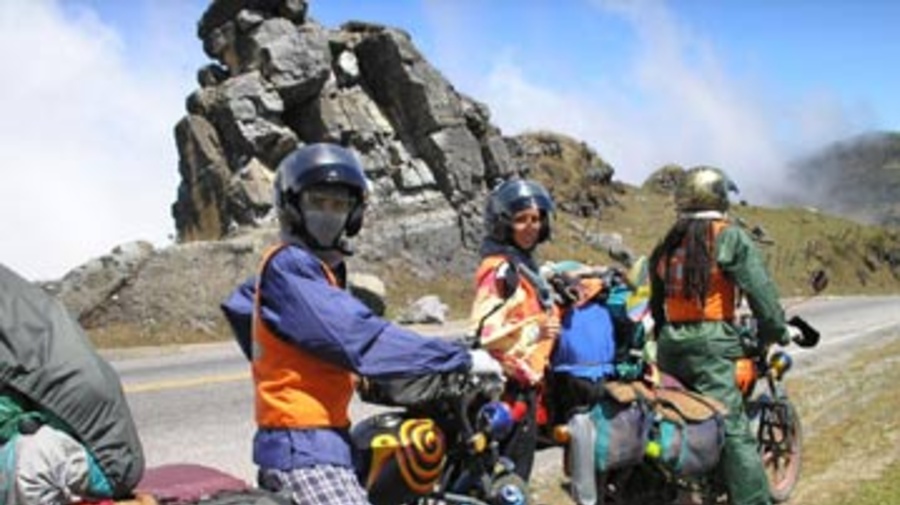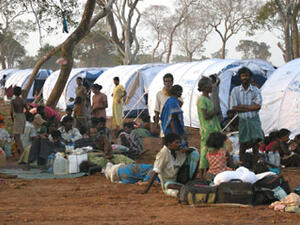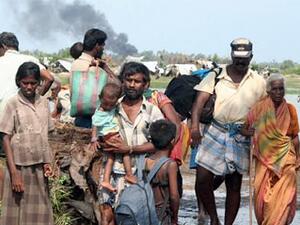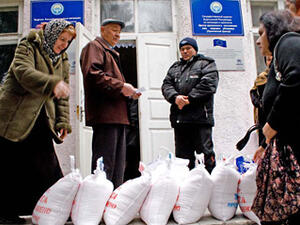Mines and conflict destroy hippy paradise in Colombia's Sierra Nevada
Mines and conflict destroy hippy paradise in Colombia's Sierra Nevada

On the Road. Coco, Flor del Viento and Toro head over the Colombian mountains towards hippy happiness in Venezuela.
SAN CRISTOBAL, Venezuela, June 4 (UNHCR) - It seems that almost nobody is immune from the violence that has long plagued Colombia, not even the latter-day hippies who preach peace, love and personal freedom in their remote retreats.
Latin America abounds with small communities of people who have dropped out of society and lead an alternative lifestyle close to nature. But in the wilds of northern Colombia, conflict is catching up with these peace and freedom lovers and the indigenous people with whom they share the mountains and forests.
In recent months, eight families have fled from their arcadia - established some 30 years ago in Colombia's Sierra Nevada de Santa Marta. Seven sought refugee in nearby urban areas, but Flor del Viento, her partner Toro and their two children sought refugee across the border.
"A young girl who was our friend walked into the forest; she stepped on a mine and died. An Indian friend went to try to rescue her and he too stepped on a mine and died," said Flor. Fearing the same fate, and facing pressure to assist irregular armed groups active in the area, they fled to Venezuela's Táchira state and eventually reached San Cristobal on their motorbikes.
"There were three options: to take up arms, to go or to die," said Toro. "They - the irregular groups - think that our young people have to defend their land with weapons, but we are not going to take up arms." Many of the estimated 30,000 indigenous people who live in the Sierra Nevada face the same stark choices.
It was hard for Flor and Toro to leave their remote hippy paradise. Located three days walk from the nearest village, it was a place where they worked the land in the morning and spent the afternoons in artistic endeavours. They learnt from their neighbours, the Kankuamos, who consider themselves the guardians of the Sierra Nevada de Santa Marta.
Flor and Toro seem almost lost - like most of the estimated 200,000 Colombians who have crossed into Venezuela, they have no legal papers, no land and no work. But they have applied for asylum and are determined to find a new haven for themselves and their children - Antorcha and Coco.
While waiting for the National Commission for Refugees' decision, they have put their artistic talents to good use and won new friends with their rousing and amusing song and drama performances at hospitals and shelters around Táchira.
This has helped them adapt quickly to a new environment where they might find a piece of land one day. They hope they will be able to share their knowledge of organic crops with other farmers in the region, as well as make a living for themselves, during a series of UNHCR workshops in the region.
The family said the locals had shown great solidarity. They live in a small room donated by the community, which also lets them store their well-travelled motorbikes in a building used as a soup kitchen for elderly people and the poor.
But while they have recovered some of the peace, love and personal freedom that they espouse, these continue to elude the indigenous people left behind in the Sierra Nevada. The Kankuamos, the Kogis, the Wiwas and the Arzarios face the fall-out from Colombia's armed conflict every day, but they refuse to leave their highland territory near the Carribean.
By Ligimat Perez in San Cristobal, Venezuela









